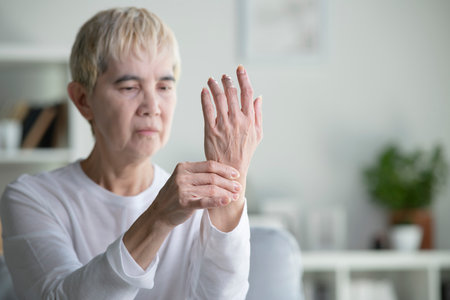Introduction to Low-Impact Activities and Arthritis
Living with arthritis in the UK can present unique challenges, especially considering the unpredictable weather and the busy pace of everyday life. However, staying physically active is widely recognised as one of the most effective ways to manage arthritis symptoms. Physical activity helps maintain joint flexibility, strengthens the muscles surrounding joints, and supports overall well-being. For those with arthritis, low-impact activities are particularly advantageous because they minimise stress on sensitive joints while still providing essential movement and health benefits. In the UK, where damp and chilly conditions are common, gentle forms of exercise can be both accessible and enjoyable, whether performed indoors or outdoors. This article explores why low-impact options are ideally suited for people managing arthritis in Britain, offering practical insights tailored to local lifestyles and climates.
Walking: The Everyday British Favourite
Walking remains one of the most accessible and cherished low-impact activities for people with arthritis across the UK. Not only is it easy to incorporate into daily routines, but it also offers a multitude of benefits for joint health, mobility, and overall wellbeing. Regular walking helps strengthen muscles around the joints, supports cardiovascular health, and can boost mood – all without placing undue stress on sensitive areas.
Popular Walking Routes Across the UK
Britain is renowned for its picturesque landscapes and well-maintained public footpaths. Whether you live in the heart of London or in the rolling hills of the Lake District, there’s no shortage of scenic walks. Below is a quick overview of popular walking locations suitable for arthritis sufferers:
| Region | Recommended Walking Route | Notable Features |
|---|---|---|
| London | The Regent’s Park Inner Circle | Paved paths, benches, accessible toilets |
| South West England | Bristol Harbourside Walk | Flat terrain, cafés along route, riverside views |
| Scotland | Loch Lomond & The Trossachs National Park Trails | Varied route lengths, gentle gradients, natural beauty |
| Northern Ireland | Belfast Lagan Towpath | Level ground, rest stops, wildlife spotting opportunities |
Tips for Arthritis-Friendly Walking – Whatever the Weather
- Choose Proper Footwear: Supportive shoes with good grip help reduce impact and provide stability on slippery pavements.
- Pace Yourself: Stick to shorter routes initially or take regular breaks at benches or cafés.
- Dress for the Conditions: The British weather can change quickly; wear layers and carry a lightweight waterproof jacket.
- Use Walking Poles: These can help with balance and relieve pressure from your joints.
Making Walking Social and Sustainable
If motivation is an issue, consider joining a local walking group or inviting friends along. Many communities have arthritis-friendly groups that cater to different abilities and set a comfortable pace. By making walking a social activity and adapting routes to suit your needs, you can enjoy its benefits year-round – even when faced with drizzle or an unexpected cold snap.
![]()
3. Swimming and Aquatic Exercises
Swimming and aquatic exercises are widely recognised as some of the most joint-friendly physical activities, making them excellent options for people living with arthritis in the UK. The buoyancy provided by water helps to reduce the impact on weight-bearing joints such as knees, hips, and ankles, allowing for movement with less pain and stiffness. Gentle swimming strokes or dedicated aqua aerobics classes can help improve cardiovascular fitness, muscle strength, and overall mobility without putting unnecessary strain on sensitive joints.
Many public leisure centres across the UK feature accessible swimming pools and often offer arthritis-friendly sessions or aqua exercise classes specifically tailored for those with joint issues. These facilities commonly provide adjustable pool temperatures, ramps, hoists, and shallow-entry points to enhance accessibility for all users. If you’re searching for a pool near you, local councils typically list leisure centre amenities online, while national directories like Swim England’s Pool Finder can also be useful resources.
For individuals who experience discomfort in cooler water, seeking out warm-water pools—sometimes referred to as hydrotherapy or therapy pools—can be especially beneficial. Warmer temperatures help relax muscles and may further ease joint pain during activity. Some NHS trusts and private health clubs offer access to these pools; it’s advisable to enquire about availability and eligibility locally. Whether you prefer gentle laps, guided aqua aerobics, or simply walking through the water, swimming remains one of the safest and most enjoyable low-impact activities for managing arthritis symptoms in the UK.
4. Cycling and Stationary Biking
Cycling, whether outdoors or indoors, stands out as an excellent low-impact exercise for people with arthritis in the UK. It provides joint-friendly movement, builds muscle strength, and supports cardiovascular health without putting unnecessary strain on sensitive joints.
Outdoor Cycling: Embracing the British Landscape
Across the UK, there is a growing network of cycle paths and traffic-free parks, making it easier and safer for arthritis sufferers to enjoy cycling. The National Cycle Network, managed by Sustrans, offers thousands of miles of well-maintained routes that are ideal for gentle rides. Parks such as Hyde Park in London, Heaton Park in Manchester, and Glasgow Green provide flat terrain and scenic surroundings perfect for low-impact activity. Always remember to check local council websites for accessible cycling facilities and any adapted cycle hire options.
Safety Considerations for Outdoor Cycling
- Opt for level routes to minimise stress on your joints.
- Wear appropriate safety gear, including a helmet and high-visibility clothing.
- If balance is a concern, consider three-wheeled bikes or adapted cycles available at some UK centres.
- Plan your rides during quieter times to avoid crowded paths.
Indoor Options: Stationary Biking
For those who prefer exercising indoors or require more stability, stationary biking is a practical choice. Many gyms across the UK are equipped with both upright and recumbent bikes—the latter offering additional back support. Community leisure centres often run classes tailored for individuals with limited mobility or arthritis. Stationary bikes allow you to control resistance levels and monitor progress without weather constraints.
Comparing Outdoor and Indoor Cycling Facilities in the UK
| Facility Type | Benefits | Typical Locations |
|---|---|---|
| Cycle Paths & Parks | Fresh air, changing scenery, social interaction | Urban & rural areas nationwide |
| Adapted Cycle Hire Schemes | Bikes suitable for various needs (e.g., tricycles) | Select cities & larger parks |
| Leisure Centres (Stationary Bikes) | Weatherproof, adjustable settings, instructor support | Towns & cities UK-wide |
| Home Exercise Bikes | Total convenience, privacy, flexible schedule | At home |
Key Advice for Arthritis Sufferers Trying Cycling
- Start slowly and listen to your body—short sessions are best when beginning.
- If new to cycling or returning after a break, consult your GP or a physiotherapist before starting.
- Avoid hilly routes unless cleared by a medical professional.
- Consider joining a local cycling group; many offer beginner-friendly sessions and advice on accessible routes.
Cycling—whether outdoors among the UKs green spaces or indoors at your local gym—is a versatile and enjoyable way for people with arthritis to stay active while protecting their joints.
5. Gentle Yoga and Pilates
Gentle yoga and Pilates are increasingly recognised across the UK as excellent low-impact options for people living with arthritis. Both practices focus on improving flexibility, strength, balance, and posture without putting undue strain on sensitive joints. Importantly, these disciplines can be easily adapted for beginners or those with limited mobility, making them accessible to a broad range of abilities.
Why Yoga and Pilates Help Manage Arthritis
Regular practice of gentle yoga or Pilates can contribute to reduced joint pain and stiffness, improved range of motion, and better overall wellbeing. These activities also promote relaxation and stress reduction—vital components in managing chronic conditions such as arthritis. Many poses and exercises can be performed seated or with support, minimising discomfort while maximising benefits.
Accessible Local Classes in the UK
Across the country, community centres, leisure facilities, and local gyms often offer specialised yoga and Pilates sessions designed for those with arthritis or limited mobility. Organisations like Arthritis Action provide tailored classes and helpful advice on their websites. The British Wheel of Yoga maintains a searchable directory to help you find certified instructors experienced in adaptive yoga for health conditions.
Online Resources for Home Practice
If attending in-person sessions isn’t feasible, several British resources are available online. NHS Live Well offers video guides for chair-based yoga routines suitable for beginners. Additionally, organisations such as Versus Arthritis feature instructional content and signposting to virtual classes specifically crafted for people with joint pain or movement restrictions.
By exploring gentle yoga and Pilates through accessible UK classes or online platforms, arthritis sufferers can discover manageable ways to stay active, build confidence, and enhance their quality of life—all within a supportive local context.
Green Spaces and Gardening
Making the most of the UKs abundance of green spaces, from local parks to community allotments, can be a gentle yet effective way for those living with arthritis to stay active. Gardening, in particular, is widely recognised as a low-impact physical activity that not only helps keep joints moving but also provides a welcome mental health boost through connection with nature.
The Benefits of Gardening for Arthritis Sufferers
Spending time tending to plants, whether its weeding, planting bulbs, or simply watering, involves a range of gentle movements. These activities promote flexibility and joint function without the high impact associated with other forms of exercise. In the UK, many communities have allotment spaces where individuals can grow their own fruit and veg – a popular pastime that encourages regular movement at your own pace.
Mental Health and Social Connection
Beyond the physical advantages, green spaces offer peace and quiet, helping to reduce stress and improve mood. Participating in community gardening projects or allotment groups can also foster social connections, which are invaluable for mental wellbeing – especially important when managing a chronic condition like arthritis.
Practical Considerations for Arthritis Sufferers
If you’re considering taking up gardening or spending more time outdoors, it’s wise to use adaptive tools with ergonomic handles to reduce strain on sore joints. Raised beds and container gardens are also increasingly popular across the UK; they minimise the need for bending or kneeling. Always remember to pace yourself, take frequent breaks, and consult your healthcare professional if you’re unsure about any new activity.
In summary, embracing the UKs lush green spaces through gardening or light outdoor activities offers arthritis sufferers an enjoyable way to stay active while supporting both body and mind.
7. Joining Local Support Groups and Classes
If you’re living with arthritis in the UK, engaging with local support groups and exercise classes can be a real game-changer for both your physical health and overall wellbeing. The NHS and various British charities, such as Versus Arthritis, offer a range of arthritis-friendly activities tailored to different mobility levels. These might include gentle yoga, aquatic sessions, or walking clubs, all designed to minimise joint strain while keeping you active.
Finding the Right Group for You
Most communities across the UK have dedicated classes or social meet-ups specifically for people with arthritis. Your GP or local NHS trust can often provide up-to-date information on what’s available nearby. Additionally, many community centres and leisure facilities run inclusive sessions led by trained instructors who understand the specific needs of those with joint pain.
The Role of British Charities
Charities like Versus Arthritis and Age UK are invaluable resources, regularly organising group activities, educational workshops, and online forums. Many offer “Living Well With Arthritis” courses and other low-impact exercise programmes that not only improve mobility but also foster a sense of belonging.
Social and Emotional Benefits
Joining these groups isn’t just about exercise—it’s about connection. Being part of a supportive community helps combat isolation, encourages motivation, and provides a space to share experiences with others who truly understand the daily challenges of arthritis. Many participants find that these friendships are as important as the physical benefits gained from regular activity.
Whether you’re looking to try something new or simply want encouragement from others facing similar hurdles, exploring local support groups or charity-led classes is an excellent step towards managing arthritis with positivity and resilience in the UK.


